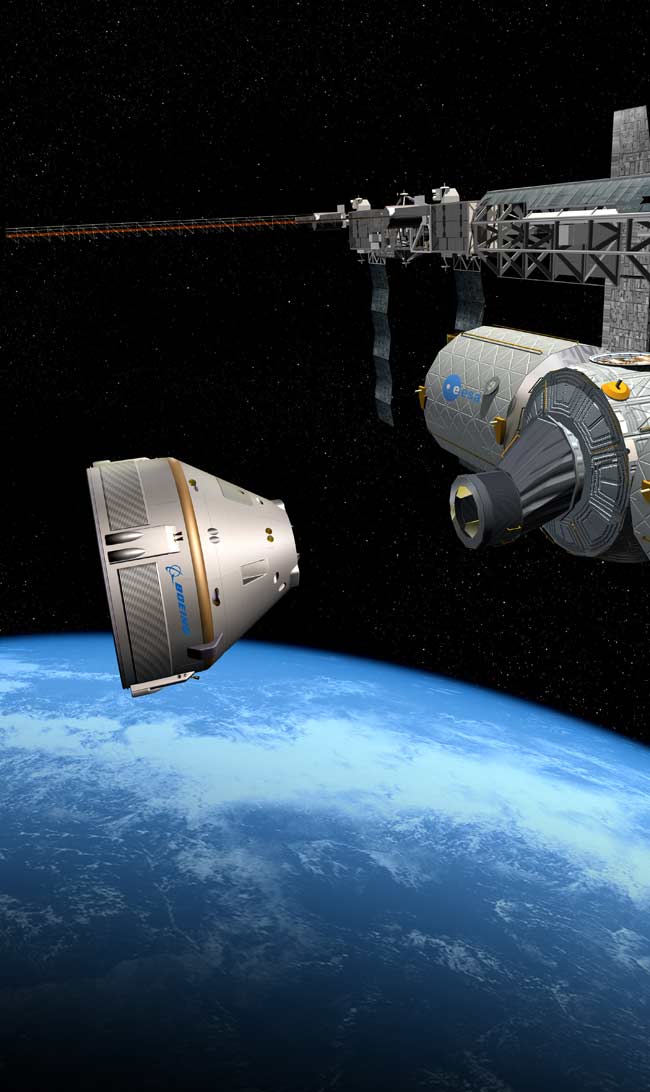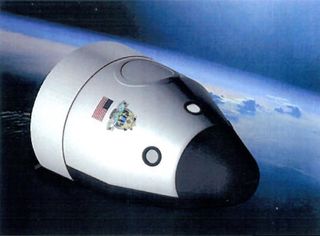
WASHINGTON — NASA intends to provide $300 million to $500 million each to at least two companies over 21 months starting in August to complete designs of vehicles capable of delivering crews to and from the International Space Station.
The selected companies also will be asked to develop plans for certifying their vehicles to carry astronauts, NASA officials said. Contractors also would be responsible for designing optional milestones into their proposals for additional precertification work after the initial 21-month period.
NASA officials said plans to select at least two prospective providers for the third round of the agency’s Commercial Crew Program is contingent upon funding. Lawmakers provided $406 million for the effort in 2012, less than half of what the agency requested.
Ed Mango, NASA’s Commercial Crew Program manager, said the agency hopes an initial crewed demonstration flight to low Earth orbit will take place in the latter half of this decade, with regular commercially operated flights to the International Space Station beginning around 2017. However, the date could slip, depending on funding in future years, he said.
Mango spoke at an industry forum at NASA's Kennedy Space Center in Florida Feb. 7, just hours before the agency released the formal solicitation for the Commercial Crew integrated Capability (CCiCap) procurement. Proposals are due March 23 for CCiCap, which is the third and final funded phase of NASA’s effort to nurture development of a commercial crew transportation system. [Top 10 Fantasy Spaceships Headed for Reality]
There will be a pre-proposal meeting at Kennedy Feb. 14 for prospective providers, but no one-on-one meetings with NASA officials are planned, according to the solicitation.
NASA will fund CCiCap using Space Act agreements, which are not subject to the Federal Acquisition Regulations (FAR) that apply to traditional government contracts. Winners will develop an integrated system featuring a crew vehicle and launch vehicle, with work to be completed May 31, 2014.
Get the Space.com Newsletter
Breaking space news, the latest updates on rocket launches, skywatching events and more!
NASA would then certify its chosen systems to carry astronauts. That work will be done under FAR-based contracts, as NASA says Space Act agreements do not give the agency the legal authority to perform this certification, or to dictate design requirements needed for certification. Prospective providers must have their vehicles certified by NASA before they can fly astronauts.

NASA's Commercial Crew Program office has not determined exactly how it will perform the certification work under the FAR contracts, but expects to present its strategy for agency approval in "late spring or early summer," Mango said.
Certification work could begin as soon as June 2014, Mango said, depending on funding availability. "We don’t know when we’re going to get the funding to do that NASA certification," he said.
To ensure that work toward certification can continue after May 31, 2014, the CCiCap Space Act agreements will include optional milestone periods that could run as long as two years and provide each company with about $400 million in additional financial assistance.
"If we have multiple partners throughout the [Space Act agreement] process, we think the most we might be able to give them is something along the lines of $400 million per partner" for the optional milestones, Mango said.
It remains uncertain, however, whether NASA will have the funding to support multiple commercial crew providers.
"We plan to maintain multiple providers as long as it makes sense technically and financially," Phil McAlister, director of commercial spaceflight development at NASA headquarters in Washington, said via email Feb. 7. "In the end, we have committed to having one or more crew transportation providers."
NASA previously planned to fund the third phase of the Commercial Crew Program under traditional FAR-type contracts, but funding constraints coupled with the desire to support multiple providers prompted the agency to switch to Space Act agreements. These kinds of agreements, used in the first two phases of the program, provide more flexibility than standard government contracts but cannot be used to buy hardware or services.
Currently NASA is reliant on Russian Soyuz vehicles to deliver crews to the station, at a cost of $63 million per seat.
Four companies are currently developing crew-carrying vehicles under funded Space Act agreements with NASA: Boeing Space Exploration of Houston; Blue Origin of Kent, Wash.; Sierra Nevada Space Systems of Louisville, Colo.; and Space Exploration Technologies Corp. of Hawthorne, Calif.
Every aspiring provider of commercial crew transportation services but one plans to use a human-rated version of United Launch Alliance’s Atlas 5 expendable rocket to reach orbit. Space Exploration Technologies plans to use its Falcon 9 rocket.
This article was provided by Space News, dedicated to covering all aspects of the space industry.
Join our Space Forums to keep talking space on the latest missions, night sky and more! And if you have a news tip, correction or comment, let us know at: community@space.com.
Dan Leone is an editor and reporter for the ExchangeMonitor Publications covering the Department of Energy and Department of Defense nuclear weapons programs. From 2011 to 2016, Dan was the NASA reporter for the space industry publication SpaceNews, where he covered U.S. space agency policy, news and missions. He also produced the SpaceGeeks podcast showcasing interviews with space industry professionals. Dan earned a bachelor's degree in public communications from American University. You can find his latest project on Twitter at @leone_exm.











